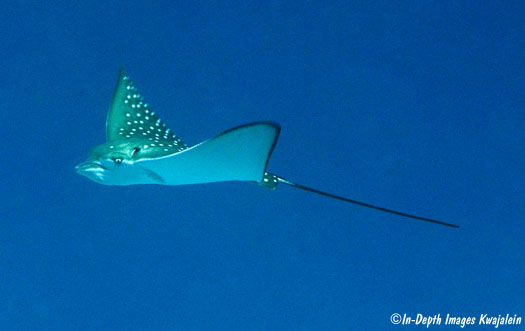
This species is commonly seen on seaward reefs and in the lagoon, including interisland reefs, pinnacles and shipwrecks. While it usually swims freely above the bottom, it feeds by digging in the sand for burrowing mollusks and perhaps echinoderms. We have seen them crunching up bivalve and gastropod mollusks, swimming away with small chunks of shell dribbling from their chewing jaws. The maximum size listed above must include their sometimes very long tail. Most often the body of a fairly large one is probably a meter or so long. Formerly called Aetobatus narinari, which has recently been shown to be an Atlantic Ocean species.

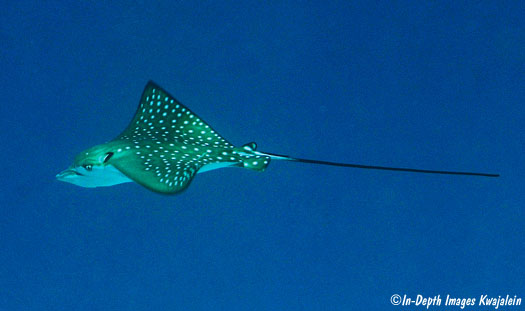
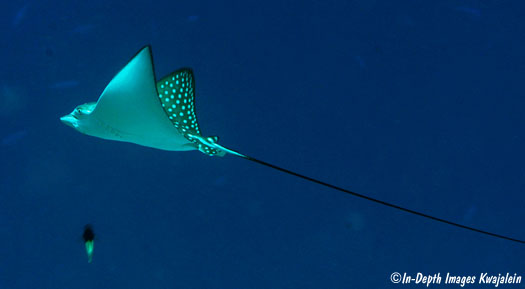
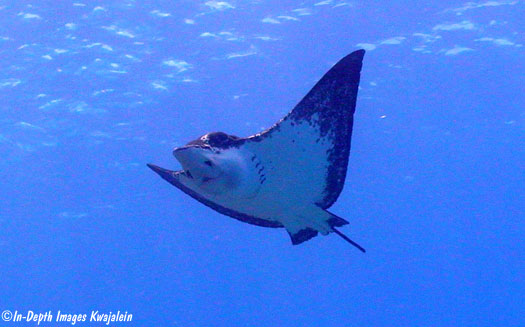
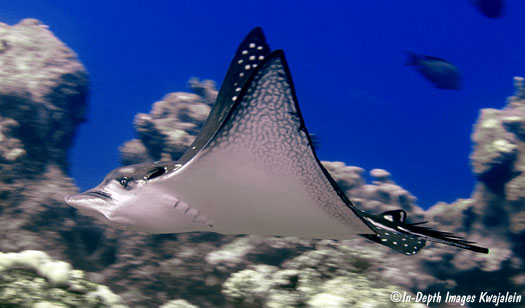
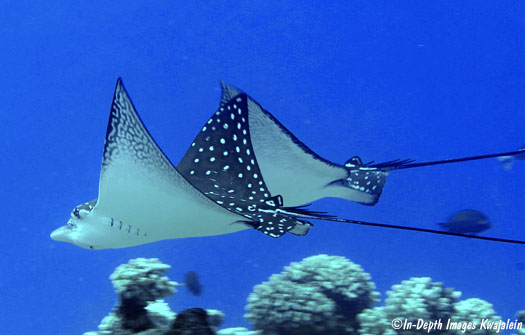
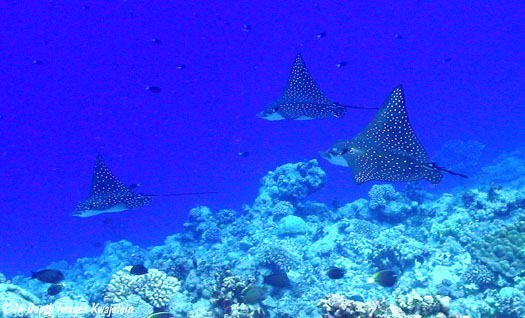
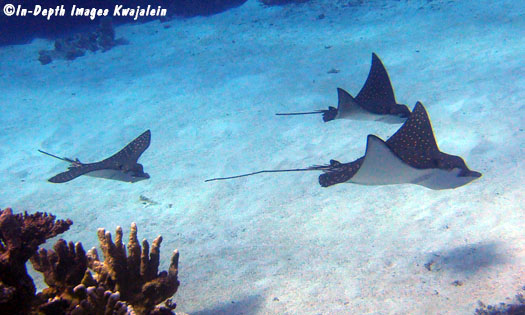
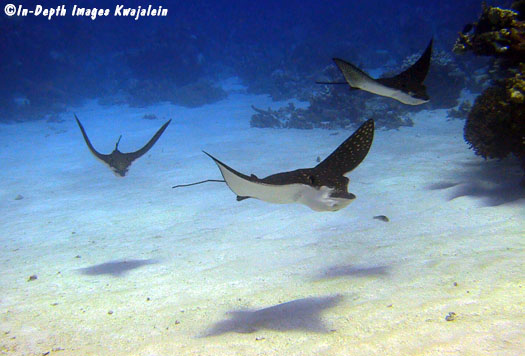
They sometimes come into shallow water. These four were in less than a half meter of water right in Kwajalein harbor.
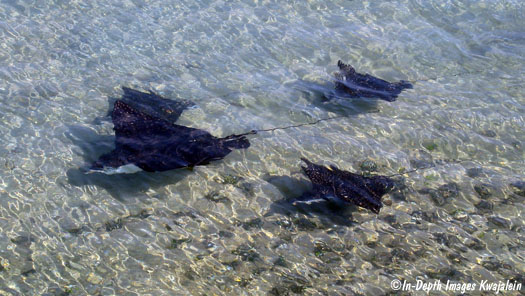
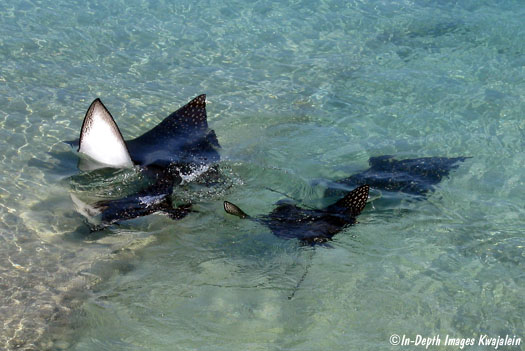
Created 1 October 2013
Updated 5 March 2023